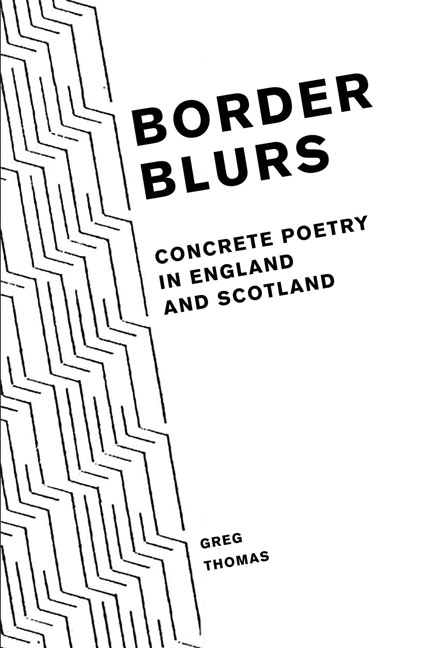Book contents
- Frontmatter
- Contents
- Dedication
- Figures
- Notes on Referencing
- Acknowledgements
- 1 Introduction
- 2 Concrete Poetry/Konkrete Poesie/Poesia Concreta: The International Scene
- 3 Order and Doubt: Ian Hamilton Finlay
- 4 Off-Concrete: Edwin Morgan
- 5 Apophasis: Dom Sylvester Houédard
- 6 Abstract Concrete: Bob Cobbing
- 7 ?Concrete Poetry and After: Conclusion
- Works Cited
- Index
5 - Apophasis: Dom Sylvester Houédard
- Frontmatter
- Contents
- Dedication
- Figures
- Notes on Referencing
- Acknowledgements
- 1 Introduction
- 2 Concrete Poetry/Konkrete Poesie/Poesia Concreta: The International Scene
- 3 Order and Doubt: Ian Hamilton Finlay
- 4 Off-Concrete: Edwin Morgan
- 5 Apophasis: Dom Sylvester Houédard
- 6 Abstract Concrete: Bob Cobbing
- 7 ?Concrete Poetry and After: Conclusion
- Works Cited
- Index
Summary
The earliest examples of Dom Sylvester Houédard's concrete poetry date from the start of 1963. These include the first of his ‘typestracts’, virtuosic geometrical constructions built up from letter-forms and diacritic marks utilising the graphic capabilities of his Olivetti Lettera 22 Series portable typewriter. These compositions were partly inspired by the international concrete poetry that Houédard had discovered via E.M. de Melo e Castro the previous year. After reading the Portuguese poet's note in the TLS, Houédard also began corresponding extensively with many of the concrete poetry movement's representatives worldwide, incorrigibly propagating his own approach to the style through a ceaseless stream of lectures, essays, and letters. It was with this frenzied activity in mind that John Sharkey, introducing his concrete poetry anthology Mindplay, described Houédard – along with Finlay – as one of the two ‘seminal personalities’ associated with the style in Britain (1971, 14).
Houédard was influenced by the concepts initially associated with concrete poetry to the extent that his work employs language as a fundamentally visual medium and conveys a certain quality of methodical or rational design. Beyond that, relatively little binds it to the Brazilian and German work discussed in my second chapter. Whereas the first concrete poets emphasised the visual appearance of letters and words to enhance or methodically alter linguistic meaning, the visual arrangement of language-forms in Houédard's work more often entails the erasure of semantic sense. In his typestracts, letters and diacritic marks are transformed into abstract architectonic motifs, language in its semantic capacities retained only in the form of occasional annotative or explanatory phrases. This anti- or trans-linguistic impetus was influenced less by classical concrete poetry than by a range of early twentieth-century and contemporaneous artistic and literary genres, including Dada, intermedia, and auto-destructive art, and various strands of contemporary North American poetry, as well as Wittgenstein's philosophy of language. In stripping the concrete poem of explicit referential value, Houédard also found a way of associating the reader's encounter with the poem with an ideal of non-authoritarian social interaction. In this sense, his work represents a more concerted movement than so far considered towards the new uses made of concrete poetry via the influences of Dada and Futurism, intermedia art, and counter-cultural ideology.
- Type
- Chapter
- Information
- Border BlursConcrete Poetry in England and Scotland, pp. 159 - 202Publisher: Liverpool University PressPrint publication year: 2019

